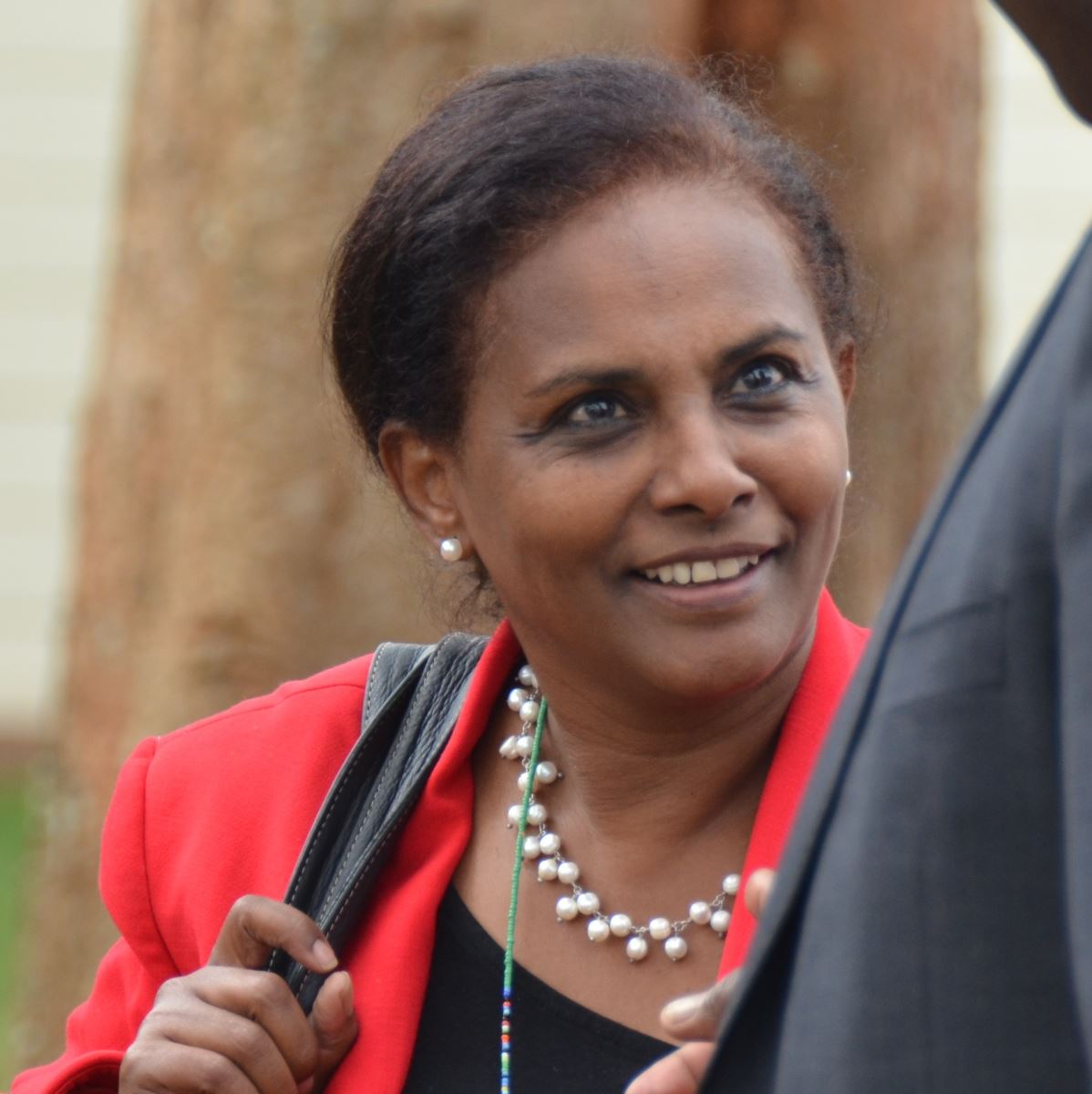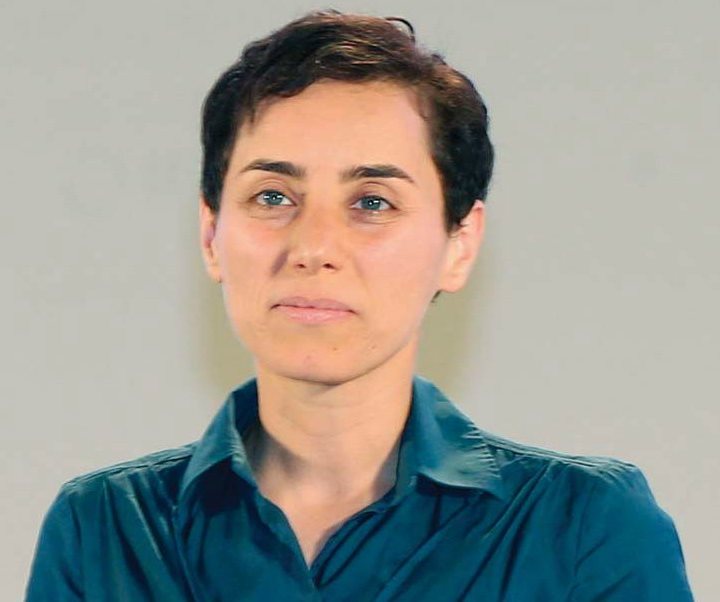By: Inas Essa
Every journey has its unique good, bad, and hard times; the journeys of female scientists in the fields of Science, Technology, Engineering, and Mathematics (STEM) are always a source of inspiration. Even though some of these journeys may intersect at some points, each one remains special with its challenges and outcomes.
According to the 2021 UNESCO science report, the number of women researchers in STEM has reached just over 33% worldwide. Although this is considered good progress in the number of female researchers, it remains too slow.
Here, we highlight the journeys of 3 women scientists, in artificial intelligence, mathematics, and agriculture fields, all of which made a real difference.
Rana Elkaliouby %20Crop.jpg)
“I try to bring emotions into technology and make our technology more responsive; I want these devices that have separated us to bring us back together.”
A pioneer and inventor of Emotion and Human Perception AI and the Executive Fellow at Harvard Business School, Rana Elkaliouby has been working on bringing our emotions back into our digital experiences as we spend a big chunk of our time using digital devices while studying, working, shopping, playing, etc. The Egyptian-American computer scientist and entrepreneur who earned a Bachelor's degree and a Master of Science degree from the American University in Cairo, then a Ph.D. at Newnham College, Cambridge, has been on a mission to humanize technology with artificial intelligence (AI) to not only understand just our orders, but our facial expressions, body language, and emotional states as well.
Pivoting the Effect of Digital Devices
At the beginning of her journey in science, she was a research scientist at the Massachusetts Institute of Technology (MIT) Media Lab where she developed applications for facial coding to benefit people with mental health issues, autism, and other research areas. Elkaliouby believes and works hard to create a world where devices and technologies that once separated us bring us back together. To make that goal achievable, she has been working with her team on ways to humanize technology, which would give us a golden opportunity to reimagine how we connect with machines, and, therefore, how we connect with each other.
Her original goal was to improve human-computer interaction, but she quickly became fascinated with the possibility of applying this technology to improve interpersonal communication, especially for autistic people who struggle with emotional communication, as well as people with visual impairment. The award-winning AI emotion recognition technology that she invented uses a massive database, which includes about 8.8 million faces analyzed in 87 countries to detect different emotions and cognitive states by combining facial expression and tone of voice to interpret how a person is feeling.
This AI technology has been used in various fields; in advertising, it has been used to test consumer engagements with ads, videos, and TV programming. Also, it is used in healthcare, education, social robotics, conversational interfaces, and more.
Awards
Elkaliouby has received many awards and nominations. In 2006, her “emotional hearing aid—a set of emotion-reading wearable glasses”, which she developed at the Affective Computing Group of MIT Media Lab, was included in the Top 100 innovations of the New York Times.
More recently, she was named to the 2018 Thinkers50 Radar list of management thinkers most likely to shape the future of how organizations are managed and led. In the same year, she was named to Fortune’s 2018 "40 Under 40" of the most influential young people in business; Forbes America’s "Top 50 Women in Tech"; Inc.’s "Female Founders 100"; Bostinno’s "50 on Fire"; and WIRED’s "25 Geniuses Who Are Creating the Future of Business".
Segenet Kelemu

“The drive of my life is to make a difference in people’s lives and to improve agriculture in Africa.”
The Ethiopian plant pathologist Segenet Kelemu was the first woman in her region to get a college degree. She grew up in a poor village in which a person would have to choose between eating and buying a pen. She was rebellious enough to refuse to get with the flow and get married at a very young age as girls in her village used to do. Moreover, she was determined to go to university and work hard; such work that has generated great outcomes for her region and globally.
Combatting the Food-Security Crisis
In 1992, Kelemu joined the International Center for Tropical Agriculture (CIAT, Colombia) as a senior scientist, and was later appointed Leader of Crop and Agroecosystem Health Management. In 2007, she became director of the Biosciences eastern and central Africa (BecA) Hub at the International Livestock Research Institute (Nairobi) and she served as a Vice President for Programs at the Alliance for a Green Revolution in Africa (AGRA, Nairobi).
Kelemu’s research is dedicated to helping the world’s smallholder farmers grow more food and rise out of poverty. Her work has been helping in contributing to the global food security crisis-solving. The scope of Kelemu’s work is studying the microorganisms that live inside of plains plants, which helps us understand how these plants survive different challenges; such as drought, pests, herbivores, and climate change. That would generate better results through understanding how to use biotechnology to aid Africa to feed its people and preserve its ecosystems.
As a result of her very hard work and scientific contributions, she was awarded the Friendship Award from the People's Republic of China and she is a Fellow of the African Academy of Sciences.After years of studying and working abroad, Kelemu returned to Africa to lead a new generation of scientists. “I think investment in African agriculture, investment in African research is actually an investment for mankind as a whole,” she says.
Awards
In 2014, she was awarded the L’Oréal-UNESCO Award for Women in Science, named one of the 100 most influential African women by Forbes Africa, and elected as a Fellow of The World Academy of Sciences in 2015.
In 2013, the African Academy of Sciences recognized Dr. Kelemu as a Fellow for her outstanding contributions to the advancement of Sciences in Africa, and in 2015, she was elected as a Fellow of The World Academy of Sciences (TWAS).
Recently, Dr. Segenet Kelemu is the Director-General of the International Center of Insect Physiology and Ecology (icipe, Nairobi), the fourth chief executive officer, and the first woman to lead that organization.
Maryam Mirzakhani

“The excitement of discovery and enjoyment of understanding something new, the feeling of being on top of a hill, and having a clear view.”
Born in Tehran, Iran, in 1977, Maryam Mirzakhani dreamed of becoming a writer and it was not until high school that she discovered her talent and passion for mathematics, where she thrived and implemented her creativity and intellect. Although this brilliant mind passed away in 2017, her invaluable contributions to the field of mathematics survive, and her notable achievements and outstanding contribution, have paved the way forward for many women mathematicians to come.
A Rich Journey in Maths
Her research topics included Teichmüller theory, hyperbolic geometry, ergodic theory, and symplectic geometry. Through her early research, Mirzakhani solved the problem of counting simple closed geodesics on hyperbolic Riemann surfaces by finding a relationship to volume calculations on moduli space.Mirzakhani earned her Ph.D. from Harvard University and was a leading scholar on the dynamics and geometry of complex surfaces. She considers her journey in the Maths field so exciting and rich. She was honored for her exceptionally creative, novel work that combines tools from classical methods of automorphic forms and symplectic reduction.
Awards
Mirzakhani who became the first woman and the first Iranian to be awarded a Fields Medal, the International Medal for Outstanding Discoveries in Mathematics, and the most prestigious award in this field, dove into this deep and entangled domain with solid determination.
During her early years as a student, she became the first female Iranian student to win the gold medal in the International Mathematical Olympiad in 1994, and in 1995 she won the prize with a perfect score. In 2005, she was acknowledged as one of the top 10 young minds who have pushed their fields in innovative directions in Popular Sciences’s fourth annual “Brilliant 10”.
Each of these three inspiring stories would never have existed to be told unless each of these distinguished researchers was determined enough to push through the boundaries and combat the challenges of society, as well as their chosen scientific fields. It is not only the issue of having a dream, it is how determined and eager you are to overcome the difficulties, to eventually celebrate the dreamed of outcomes.
References